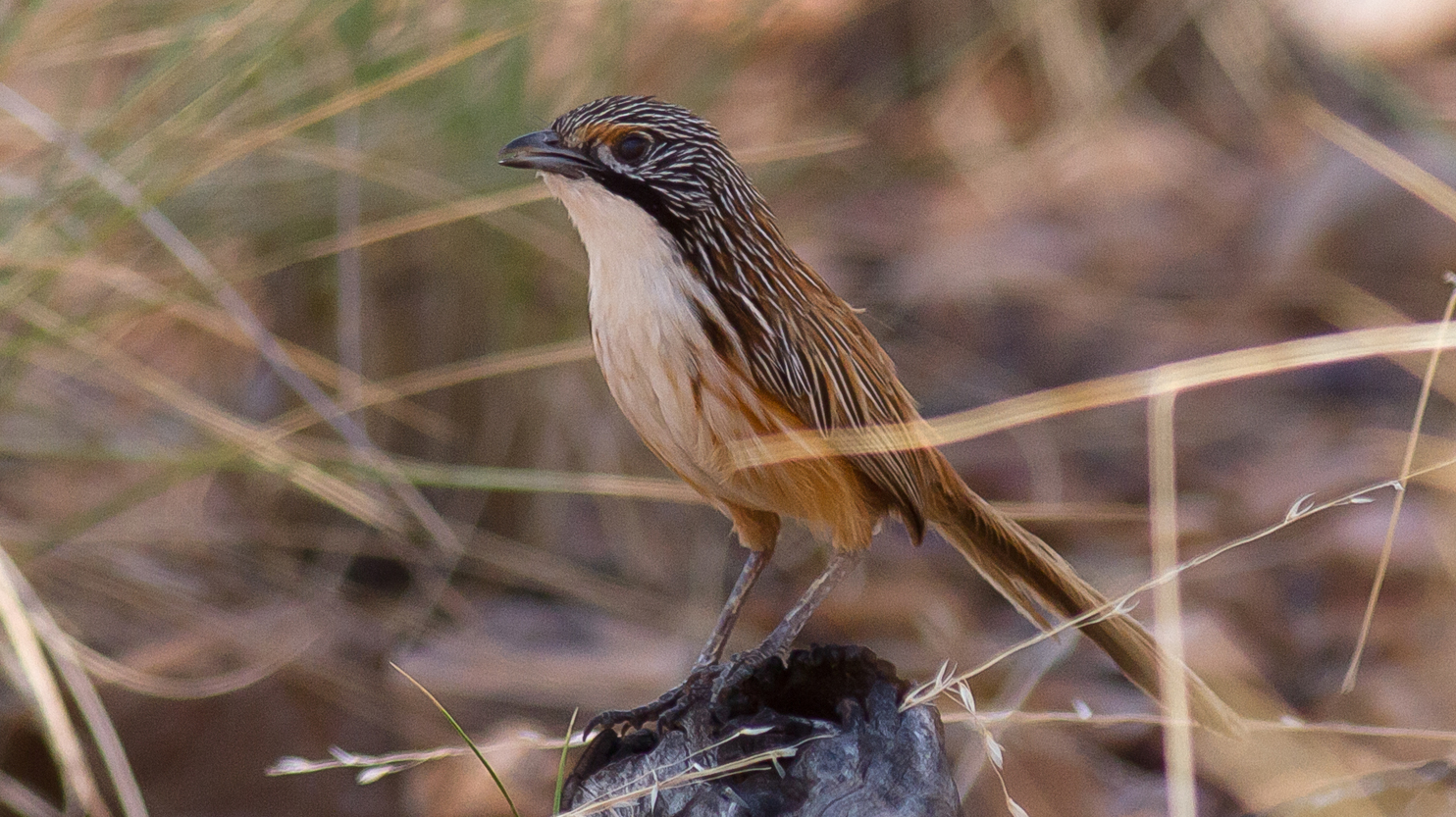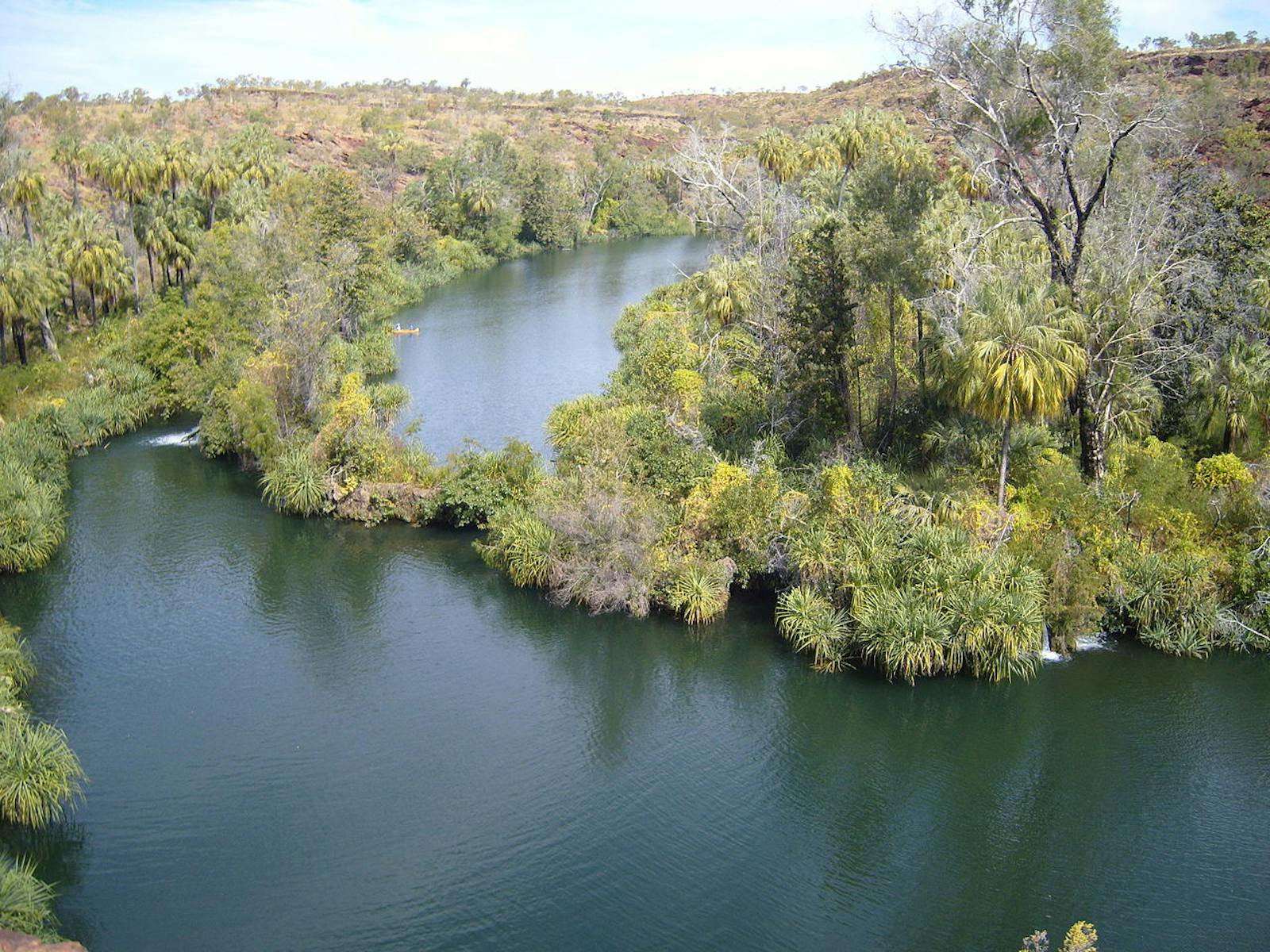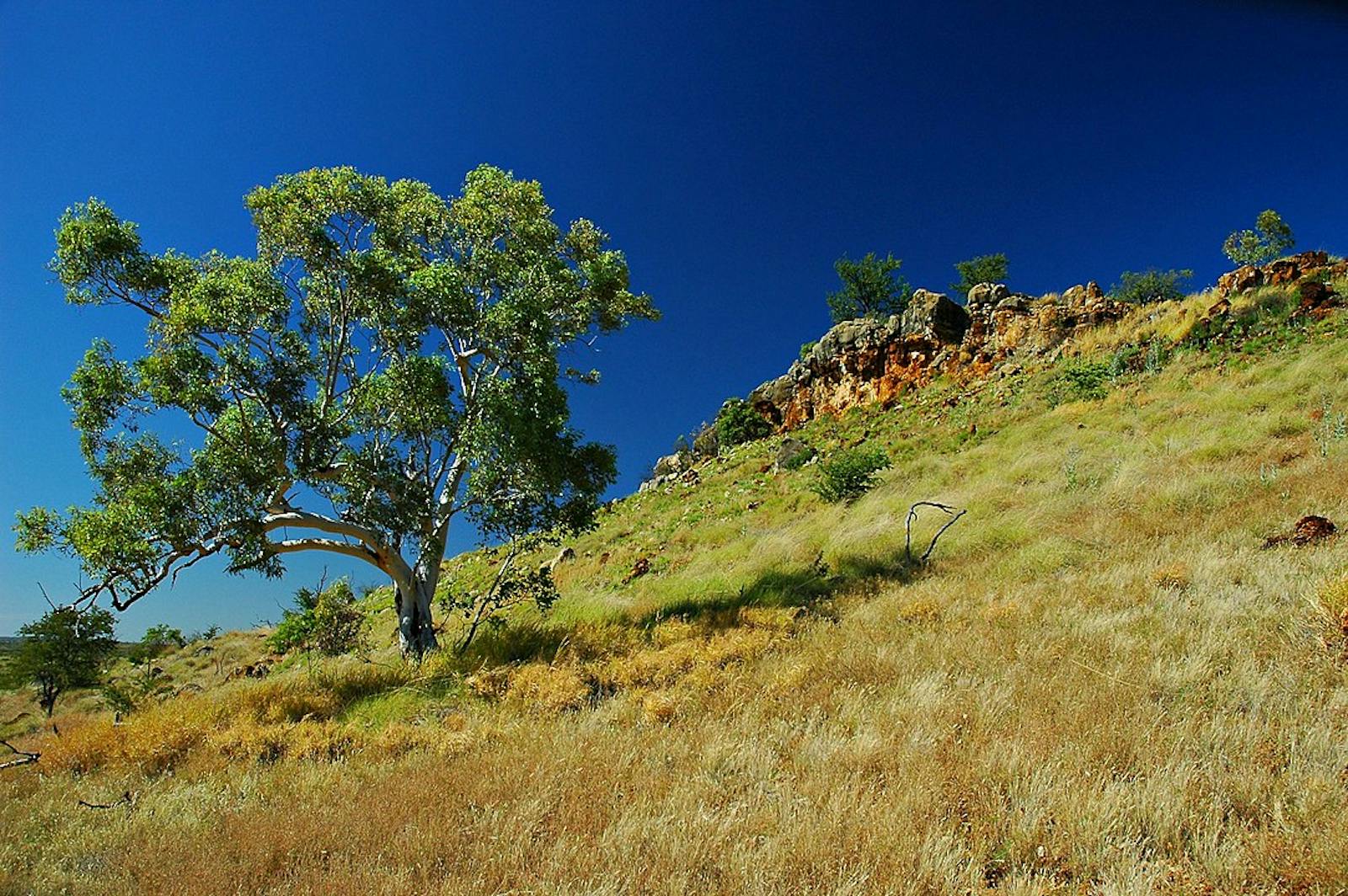Carpentaria Tropical Savanna
The ecoregion’s land area is provided in units of 1,000 hectares. The conservation target is the Global Safety Net (GSN1) area for the given ecoregion. The protection level indicates the percentage of the GSN goal that is currently protected on a scale of 0-10. N/A means data is not available at this time.
Bioregion: North Australian Tropical Savannas (AU8)
Realm: Australasia
Ecoregion Size (1000 ha):
36,803
Ecoregion ID:
184
Conservation Target:
99%
Protection Level:
1
States: Australia
The Carpentaria tropical savanna encompasses a long arc of depositional plains along the southern Gulf of Carpentaria. It remains largely covered in natural vegetation. Humid riparian and gorge forests and woodlands wind through open grasslands and savannas before merging with wetlands and mangroves along the coast. The ecoregion rises towards uplands in the east and southwest creating mosaics of wetter and drier habitats.

The flagship species of the Carpentaria Tropical Savanna ecoregion is the Carpentarian grasswren. Image credit: Creative Commons
Extensive mangroves line the coast and in the Pellew Islands. Just inland, wetlands dominated by Acacia stenophylla occur. Woodlands of Darwin stringybark (Eucalyptus tetrodonta) are common in the the coastal plains below the Gulf Fall and uplands towards the south and east. Open eucalypt woodlands with Darwin box (E. tectifica) and long-fruited bloodwood (Corymbia polycarpa) occur in the Gulf Fall region with its rugged sandstone terrain and gorges. Dicanthium grasslands are extensive on the flat clay pains around the Gregory, Leichardt, and Flinders Rivers.
Small patches of monsoon rainforest occur in the lowlands. Spinifex (Plectrachne pungens) hummock grasses can be found in the understory of the Gulf Fall and coastal plains. Several plant species are endemic to the Pellew Islands, such as Corchorus rostricephalus. Rare plant species include Trachymene glandulosa, Alectryon tropicus, Brachychiton collinus and Cycas brunnea.
The coastal wetlands and mudflats along the Gulf are a critical migratory site for thousands of migratory shorebirds that travel seasonally along the East Asian-Australasian Flyway. The coastal plains and wetlands are rich in birds. More than 200 bird species are found in the Pellew Islands. Staaten River National Park in the Gulf Plain contains important breeding sites for over 12,000 birds, including the magpie goose, Pacific black duck, and Australian pelican, as well as herons and cormorants.
Several rare and threatened mammals occur, including the brush-tailed rabbit-rat (Conilurus penicillatus), Julia Creek dunnart (Smithopsis douglasi) in the Gulf Plain, the remaining 1,000 individuals of the Carpentarian rock-rat (Zyzomys palatalis), the rock ringtail possum (Petropseudes dahli), short-eared rock-wallaby (Petrogale brachyotis), and sandstone antechinus (Pseudantechinus bilarni). A rich reptile fauna includes, for example, 71 species in Boodjamulla with little spotted snake (Suta punctata), olive python (Liasis olivaceus), gravelly-soil Ctenotus (Ctenotus lateralis) and central netted dragon (Ctenophorus nuchalis). The endemic sking, the Carpentaria lerista (Lerista stylis) occurs mainly on Pellew Islands.
-CC-2008.jpg)
Golden-shouldered parrot. Image credit: Creative Commons
Extensive cattle grazing and invasive weeds degrade natural savannas and grasslands throughout the ecoregion. More frequent and late season fires set by people also alter natural communities of eucalypt woodlands and hummock grasslands. The loss of favourable habitat from altered fire regimes has contributed to the decline of the Carpentarian grass-wren (Amytornis dorotheae).
Feral animals, such as horses, pigs, and goats degrade riparian habitats, water points, and wetlands, and drive decline in native species. Invasive cane toads poison native predators. Tourism and pollution of the McArthur River by the McArthur River mine damages habitats. Roughly 14% of the ecoregion is in conservation areas, including Staaten River National Park (4,700 km2), Limmen National Park (9,369 km2), Lawn Hill National Park, Boodjamulla National Park, and adjacent resource reserves.
The key conservative actions for the next decade are to: 1) increase protection and management of migratory bird habitats along the coast to reduce predation by non-native predators and roost site disturbance from feral animals; 2) support the annual culture camp and wildlife survey organized by Bush Heritage Australia and the peoples of Waanyi Garawa since 2016; and 3) strengthen conservation actions for the Island groups of Pellew and Wellesley, Wollogorang, coastal wetlands, and Dichanthium grasslands.
Citations
- Booth, C., Traill, B. 2008. Conservation of Australia’s Outback Wilderness. The Pew Environment Group. Retrieved from https://www.issuelab.org/resources/8332/8332.pdf
- NLC. 2004. Environmental Management Status Reports for Aboriginal Lands in the Northern Land Council Region. Caring for Country Unit, Northern Lands Council, Darwin.
- Morgan, G. 1999. Gulf Plains. Pages 2/1-2/43 in P. Sattler and R. Williams, editors. The Conservation Status of Queensland's Bioregional Ecosystems. Environmental Protection Agency, Brisbane, Australia.




